#digital marketing strategies to increase brand awarness
Text

With digital marketing strategies like pay-per-click and social media marketing, companies can increase awareness about their brand. In addition, these marketing strategies provide brands with dynamic tools to raise brand awareness, attract new audiences, etc., which leads to increased sales and profit.
Build your brand with digital media & take the benefits of social media branding contact Media Heights. By Mediaheightspr.com
#Digitalbranding #MEDIAHEIGHTS #advertisingagency #web #MEDIAHEIGHTSPRCOM #best #public #relation #agency #in #chandigarh #mohali #punjab #north #india #digitalmarketingcompany #searchengineoptimization #content #instagrammarketing #buildingrelationships #globally #customer #internetbanding — at media heights #smo #branding #facebook #twitter #marketingonline #brand #searchengineoptimization #internetmarketing #follow #digitalagency #marketingagency #motivation #digitalmarketingtips #onlinebusiness #websitedesign #marketingonline #brand #searchengineoptimization #content #instagrammarketing #advertisingagency #web #technology #onlinebranding #branding360degree #SEO #SEObrandingagency #websiteranking #websitetrafic #Digitalmarketing #mediaheights #OnlineAdvertising #instagrammarketing #advertisingagency #web #marketingonline #brand
#With digital marketing strategies like pay-per-click and social media marketing#companies can increase awareness about their brand. In addition#these marketing strategies provide brands with dynamic tools to raise brand awareness#attract new audiences#etc.#which leads to increased sales and profit.#Build your brand with digital media & take the benefits of social media branding contact Media Heights. By Mediaheightspr.com#Digitalbranding#MEDIAHEIGHTS#advertisingagency#web#MEDIAHEIGHTSPRCOM#best#public#relation#agency#in#chandigarh#mohali#punjab#north#india#digitalmarketingcompany#searchengineoptimization#content#instagrammarketing#buildingrelationships#globally#customer#internetbanding — at media heights
2 notes
·
View notes
Text
Significance Of Pay Per Click To Build Your Business
the significance of Pay Per Click(PPC) advertising in building a business cannot be overstated. It provides businesses with instant visibility, flexibility, and scalability, allowing them to reach their target audience directly and generate quality leads. By leveraging the power of PPC, businesses can effectively build their online presence, increase brand awareness, and drive targeted traffic to their websites, ultimately leading to business growth and success.
#PPC Boost#Business Growth#Digital Advertising#Online Marketing#PPC Strategy#Targeted Ads#Increase Visibility#Drive Traffic#Conversion Rate#ROI#PPC Management#Ad Campaigns#Business Success#PPC Advertising#Online Visibility#PPC Expert#Marketing Strategy#PPC Success#Business Expansion#PPC Results#Levycon India#Pay Per Click Advertising#Digital Marketing#Online Advertising#Increase Sales#Targeted Traffic#Brand Awareness#Lead Generation#Cost Effective Advertising#PPC Tips
0 notes
Text
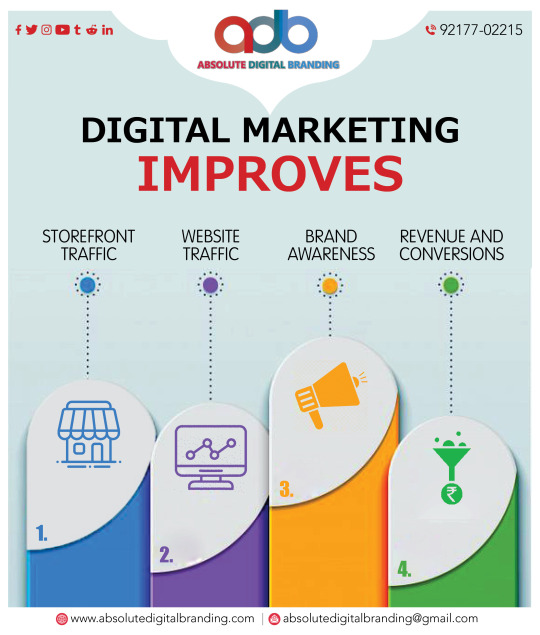
With digital marketing strategies like pay-per-click and social media marketing, companies can increase awareness about their brand.
Build your brand with digital media & take the benefits of social media branding contact Absolute Digital Branding & Public Relations. By Absolutedigitalbranding.com #Internetmarketing #Marktingstrategy #SEObrandingagency #SEO #PPC #SMO #SMM #SeoCompany #digitalmarketingcompany #socialmediamarketingcompany #absolutedigitalbranding #searchengineoptimization #advertisingagencyinmohali #facebook #twitter #marketingonline #internetmarketing #follow #digitalagency #marketingagency #motivation #digitalmarketingtips #onlinebusiness #websitedesign #marketingonline #brand #ABSOLUTEDIGITALBRANDING #BEST #PUBLIC #RELATION #AGENCY #IN #CHANDIGARH #MOHALI #PUNJAB #NORTH #INDIA #onlinebranding #branding360degree #SEObrandingagency #websiteranking #websitetrafic #Digitalmarketing #OnlineAdvertising #instagrammarketing #web #technology #marketingonline #content #instagrammarketing #advertisingagency #web #buildingrelationships #globally #customer #internetbranding-at Absolute digital Branding & Public relations.
#With digital marketing strategies like pay-per-click and social media marketing#companies can increase awareness about their brand.#Build your brand with digital media & take the benefits of social media branding contact Absolute Digital Branding & Public Relations. By A#Internetmarketing#Marktingstrategy#SEObrandingagency#SEO#PPC#SMO#SMM#SeoCompany#digitalmarketingcompany#socialmediamarketingcompany#absolutedigitalbranding#searchengineoptimization#advertisingagencyinmohali#facebook#twitter#marketingonline#internetmarketing#follow#digitalagency#marketingagency#motivation#digitalmarketingtips#onlinebusiness#websitedesign#brand#ABSOLUTEDIGITALBRANDING#BEST
1 note
·
View note
Text
Creating Influential Marketing That Converts: Top 10 Tips

When you create marketing materials, it’s important to consider what will make them influential. After all, the goal of marketing is to influence the behavior of your target audience. But what exactly is influential marketing?So, influential marketing is any marketing that has a significant impact on the behavior of its target audience. For example, an ad campaign that convinces people to switch to a new brand of toothpaste is considered influential.So, how can you create influential marketing that will actually convert? Keep reading for 10 tips that will help you create persuasive and influential marketing materials that will yield results!What Makes Influential Marketing Different?What makes influential marketing different from regular marketing is that it not only captures the attention of your audience and generates leads, but also encourages them to take a definitive action. Whether that’s buying your product, signing up for your newsletter, or donating to your cause – influential marketing can be used to drive conversions.To achieve this, it’s important to understand the psychology behind what drives people to take action. You need to understand the audience’s behavior, values, and motivations. You also need to create content that is tailored specifically toward that audience and is both visually appealing and emotionally resonant.Another key element of influential marketing is the way it is delivered. Whether through email, social media, or pay-per-click advertising, you need to use the right channels to reach your audience. Your content should also be creative and dynamic, as this will help grab their attention and encourage them to take action.Why You Should Use Influential Marketing StrategiesIt is important for marketers to use influential marketing strategies for a number of reasons. Firstly, it gives brands the opportunity to engage with their target audience in a way that increases customer loyalty and trust. This is especially important in an era where many people are wary of traditional forms of marketing and advertising.In addition, using influential marketing strategies can help increase conversions and drive sales. By understanding the values and motivations of their target audience, marketers can create content that is both emotionally resonant and visually appealing. This will help engage the audience and inspire them to take action.Finally, influential marketing strategies can be used to build long-term relationships with customers. By using creative and engaging content that people are likely to share, marketers can create viral campaigns that will reach new potential customers and foster loyalty from existing customers.What Are the Benefits of Influential Marketing?Using influential marketing strategies can provide many benefits for marketers, including:Increased Reach – Influential marketing can help brands build relationships and reach new potential customers. By creating content that is eye-catching and emotionally resonant, brands can tap into the power of influencers to spread the message.Boosted Brand Awareness – Influential marketing helps to increase brand awareness, allowing marketers to reach a wider audience and create a lasting impression. Influential content should have a touch of creativity and originality that makes it stand out from other content.
Do Read: https://ennobletechnologies.com/social-media/creating-influential-marketing-that-converts-top-10-tips/
#AMP Pages#automation tools#best digital marketing agency#Boosted Brand Awareness#Content Performance#Content Results#Digital Marketing#Email marketing#EnnobleTechnologies#Ideal Customer#Improved Conversion Rates#Increased Reach#Influential Marketing#Influential marketing Services in Hyderabad#Influential Marketing Strategies#Leverage Authentic Voices#pay-per-click advertising#regular marketing#Search Engine Optimization#SEO#SMO#Social Media Optimization services in hyderabad
1 note
·
View note
Text
Digital Marketing Strategies to Increase Brand Awareness
In today’s digital age, businesses must have an effective digital marketing strategy to increase their brand awareness. Digital marketing can help a business reach a wider audience while also increasing its visibility online. It is necessary to understand what digital marketing strategies are available and how they can be used to promote your brand and engage customers.
Generate Brand Awareness…
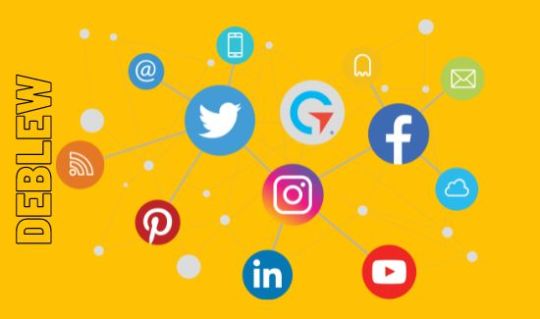
View On WordPress
#Digital Marketing#Digital Marketing Strategies#Increase Brand Awareness#Search Engine Optimization#Social Media Marketing
0 notes
Text
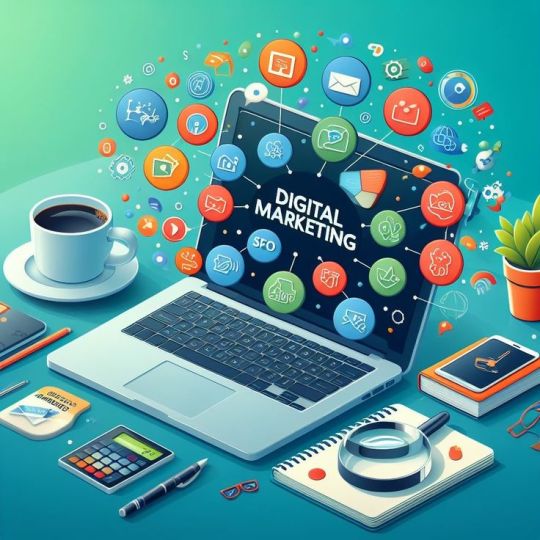
What are the advantages of digital marketing?
Digital marketing offers numerous advantages over traditional marketing methods. Some of the key benefits include:
1. Cost-Effectiveness:
Digital marketing is often more affordable than traditional marketing channels like TV, radio, and print.
Campaigns can be tailored to fit any budget, allowing small businesses to compete with larger companies.
2. Measurability:
Digital marketing provides detailed analytics and reporting, enabling marketers to track the performance of their campaigns in real time.
Metrics such as click-through rates, conversion rates, and return on investment (ROI) are easily measurable.
3. Targeted Reach:
Digital marketing allows precise targeting based on demographics, interests, behavior, and location.
Platforms like Google Ads and Facebook Ads enable marketers to reach specific audiences that are more likely to be interested in their products or services.
4. Flexibility and Agility:
Digital marketing campaigns can be quickly adjusted based on performance data.
Marketers can experiment with different strategies and tactics without significant delays or costs.
5. Global Reach:
The Internet provides access to a global audience, enabling businesses to expand their market beyond local or regional boundaries.
E-commerce platforms and international shipping options further support global expansion.
6. Enhanced Engagement:
Digital marketing channels, such as social media, email, and content marketing, facilitate direct interaction with customers.
Two-way communication allows for better customer relationships and improved customer satisfaction.
7. Personalization:
Digital marketing tools allow for personalized marketing messages based on user behavior and preferences.
Personalization can significantly improve the customer experience and increase conversion rates.
8. Higher Conversion Rates:
Digital marketing strategies like search engine optimization (SEO), pay-per-click (PPC) advertising, and social media marketing can drive highly targeted traffic to websites.
This targeted traffic is more likely to convert into leads or sales.
9. Better Customer Experience:
Digital marketing enables businesses to provide a seamless and integrated customer experience across various online channels.
Techniques such as remarketing and automated email responses can enhance the overall customer journey.
hashtag#Overall, digital marketing offers a versatile, efficient, and effective way for businesses to reach and engage with their target audience, leading to increased brand awareness, customer loyalty, and revenue growth.
15 notes
·
View notes
Text
Michael Esposito Staten Island - Influencer Marketing the Future of Engagement? Exploring its Impact & What We Can Expect
In the ever-evolving landscape of marketing, influencer marketing has emerged as a powerful tool for brands to engage with their target audience. Michael Esposito Staten Island — How Influencer Marketing Revolutionizes Brand Engagement demonstrates the transformative potential of this approach. As the digital realm continues to expand, the integration of influencer marketing and SEO is proving to be a game-changer, offering brands amplified awareness, improved engagement metrics, and a boost in conversion rates. Let's delve into the latest trends and insights to understand the impact of influencer marketing and what we can expect in the future.

The Rise of Influencer Marketing
In recent years, influencer marketing has experienced tremendous growth, with an estimated surge from $4 billion in 2022 to over $6 billion in 2025. This surge is not only fueled by direct partnerships but also by the increasing adoption of influencer marketing by brands, with 68% planning to increase their influencer marketing budgets. Additionally, the shift towards social commerce strategies has attributed 29% of sales to social commerce, further underlining the impact of influencers in driving consumer engagement and sales.
Moreover, the influence of influencers is not restricted to specific demographics, as 63% of internet users of all ages have engaged with a sponsored influencer post at some point 3. This demonstrates the widespread impact and reach of influencer marketing across diverse consumer segments.
The Convergence of Influencer Marketing and SEO
As consumers seek authentic content based on real experiences with products and services, the convergence of influencer marketing and SEO has become increasingly evident. This convergence presents an opportunity for brands to leverage influencer content to bolster their SEO strategies and enhance their online visibility.
How Influencer Marketing Impacts SEO
The relationship between influencer marketing and SEO is complex yet complementary. Influencer partnerships can drive engagement, authority, and trust signals that are crucial for SEO. Positive influencer endorsements can build trust with their audience, which can translate to trust in the brand itself. Furthermore, influencers creating valuable content featuring the brand can be leveraged for SEO benefits, including the acquisition of high-quality backlinks.
Future Expectations
Looking ahead, influencer marketing is poised to play a pivotal role in shaping the future of engagement for brands. The integration of influencer content with SEO strategies is expected to further elevate optimization and rankings, ultimately enhancing brand authority and trust signals. Brands that capitalize on this convergence and provide authentic value to their audiences are likely to reap substantial rewards.
Influencer Marketing and SEO: A Symphony of Success
In the journey towards maximizing the potential of influencer marketing and SEO, there are actionable steps that brands can take to craft a strategy that amplifies their brand's reach and builds lasting organic visibility:
1. Aligning Influencers with SEO Goals
Considering micro-influencers who engage in deeper connections with their audiences and create authentic content.
Prioritizing content quality over reach, focusing on informative, engaging content that optimizes for relevant keywords.
Investing in evergreen topics that offer lasting value to the audience and search engines alike.
2. Capitalizing on Content Synergies and Measuring Impact
Repurposing influencer-generated content and optimizing it for relevant keywords.
Leveraging backlinks from influencer partnerships to boost SEO ranking.
Tracking and analyzing influencer campaigns using analytics tools to monitor audience engagement and organic search traffic.
3. Building a Robust SEO Foundation
Optimizing the website for technical soundness, fast loading times, and mobile-friendliness.
Focusing on quality backlinks beyond influencer partnerships, actively pursuing high-quality backlinks from reputable websites in the niche.
In addition to these steps, brands are encouraged to develop always-on influencer partnerships, coordinate integrated content strategies, encourage backlinks, build internal influencers, monitor optimization for E-A-T (Expertise, Authoritativeness, Trustworthiness), and leverage video content to bolster reach and visibility.
Conclusion
In conclusion, the future of influencer marketing is bright, with an increasing number of brands recognizing its potential as a valuable marketing tool. Michael Esposito Staten Island - The Impact and Future of Influencer Marketing underscores the significant role this strategy plays in modern marketing. As the integration of influencer marketing and SEO continues to evolve, brands have the opportunity to drive real business impact by leveraging influencers' authenticity and social proof to elevate optimization and rankings. By embracing this convergence and providing authentic value to their audiences, brands can expect to see their authority, trust signals, and conversions surge over competitors.
In essence, influencer marketing is not just a passing trend but an integral component of the marketing landscape, offering brands the potential for sustained engagement, improved visibility, and significant returns on investment.
By aligning influencer marketing with SEO goals and embracing the convergence of these strategies, brands can position themselves for success in the dynamic world of digital marketing. As the relationship between influencer marketing and SEO continues to evolve, the future indeed favors those who recognize and capitalize on this intrinsic link.
For brands looking to stay ahead of the curve, an integrated approach that leverages the power of influencer marketing and SEO is key to unlocking the full potential of both strategies.
In essence, influencer marketing is not just a passing trend but an integral component of the marketing landscape, offering brands the potential for sustained engagement, improved visibility, and significant returns on investment. By aligning influencer marketing with SEO goals and embracing the convergence of these strategies, brands can position themselves for success in the dynamic world of digital marketing. As the relationship between influencer marketing and SEO continues to evolve, the future indeed favors those who recognize and capitalize on this intrinsic link.
#michael esposito staten island#Marketing the Future#Exploring its Impact#Future Expectations#SEO Goals
19 notes
·
View notes
Text
Unleashing the Power of Facebook Marketing: Best Strategies for Success
In the ever-evolving landscape of digital marketing, Facebook continues to reign supreme as a powerhouse platform for businesses looking to connect with their target audience, build brand awareness, and drive sales.

Crafting an effective Facebook marketing strategy is essential for staying ahead in the competitive online market. Here, we explore the best strategies to make the most of your Facebook marketing efforts.
Create a Compelling Business Page: Facebook Business Page is the foundation of your online presence. Optimize it by providing complete and accurate information, using high-quality visuals, and incorporating your brand's unique personality.

Regularly update your profile and cover photos to keep your page fresh.
Content is King: Develop a content strategy that resonates with your audience. Use a mix of engaging text, eye-catching visuals, and videos. Experiment with different content types to see what works best for your target demographic. Consistency is key, so establish a posting schedule and stick to it.
Leverage Facebook Ads: Facebook's robust advertising platform allows you to reach highly targeted audiences. Utilize Facebook Ads to promote your products or services, boost posts, and drive website traffic.

Experiment with different ad formats, such as carousel ads, video ads, and slideshow ads, to see what generates the best results.
Harness the Power of Video: Video content has become increasingly popular on Facebook. Utilize live videos, tutorials, behind-the-scenes glimpses, and storytelling to engage your audience. Facebook's algorithm often favors video content, leading to higher reach and engagement.
Engage with Your Audience: Actively respond to comments, messages, and reviews on your page. Encourage discussions, ask questions, and run polls to foster a sense of community.

By engaging with your audience, you build trust and loyalty, which can translate into customer retention and advocacy.
Run Contests and Giveaways: Create excitement and boost engagement by running contests and giveaways. Encourage users to like, share, and comment for a chance to win. This not only increases your reach but also creates a buzz around your brand.
Utilize Facebook Analytics: Regularly analyze Facebook Insights to understand the performance of your content and ads. Identify trends, track key metrics, and adjust your strategy accordingly.

This data-driven approach ensures that you're making informed decisions to optimize your Facebook marketing efforts.
Implement Retargeting Strategies: Make use of Facebook Pixel to track website visitors and retarget them with relevant ads. This helps re-engage potential customers who have shown interest in your products or services, increasing the likelihood of conversion.
Collaborate with Influencers: Partnering with influencers can significantly expand your reach.
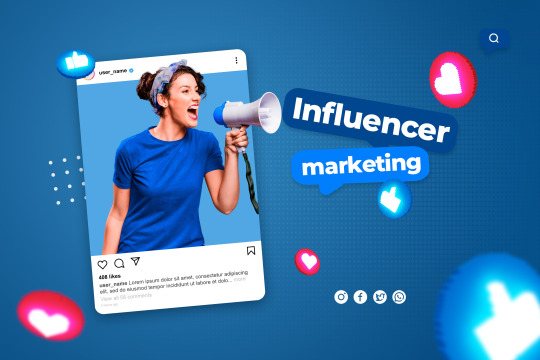
Identify influencers whose audience aligns with your target demographic and collaborate on sponsored content or promotions.
Stay Updated on Algorithm Changes: Facebook's algorithm evolves, impacting how content is displayed in users' feeds. Stay informed about algorithm changes and adjust your strategy accordingly. Currently, meaningful interactions and quality content are prioritized, so focus on creating content that sparks genuine engagement.
Conclusion:
Mastering Facebook marketing requires a combination of creativity, consistency, and adaptability. By implementing these strategies, you can unlock the full potential of Facebook as a marketing powerhouse, driving brand growth and achieving your business objectives. Keep refining your approach based on data and feedback, and watch as your brand flourishes in the dynamic world of social media marketing.
#facebook marketing#digital marketing#influencers#seo#linkedin#facebook ads#social media marketing#search engine optimization#online marketing#learn digital marketing#seo expert#marketing agency#facebook advertising#facebook ad manager#facebook ad agency services#facebook ad boost#social media#socialmedia#facebook
19 notes
·
View notes
Text
The Basics of Digital Marketing For Beginners
Tips for Beginners
As a digital marketing beginner, you don’t have to feel intimidated or lost. Here are some tips to make digital marketing for beginners easier to grasp and get going.

Know everything you can about brand awareness
Building brand awareness is an essential element to your marketing strategy and your success. Start out by knowing everything you can about it and its benefits.
Essentially, brand awareness is the recognition and familiarization by others of your brand, product, or service. To boost such awareness, you will need to help consumers learn more about your business, the products or services you offer, and what makes you stand out from your competitors.
There are several ways to build brand awareness. Consistency in how you present your brand across channels and platforms will be key. Consumers will be able to look at a blog or social media post and instantly know it’s yours if you do it right.
SEO is everywhere
Search engine optimization (SEO) is everywhere today! Once you acknowledge this, it’s time to get in the game by understanding how SEO works and ways to use it to your advantage.
Sure, it can be a little intimidating at first, so start slow and easy. Identify keywords and phrases that your target audience uses to conduct searches. Incorporate these into all your content so your audience can find you more easily. From here, you’ll want to consider a link-building strategy to boost your SEO even more.
If you start feeling anxious, remember to take action one step at a time and keep learning all you can about SEO techniques and available tools. Soon you’ll be using it to increase website traffic, gain higher-quality leads, and more.
Discover the online potential of your brand
One of the most empowering moments that can occur as a digital marketer is to discover the online potential of your brand. Digital marketing is the perfect avenue for generating high-quality leads that result in more interaction with your brand and, ultimately, higher sales.
You may discover opportunities to offer webinars to customers, create courses, sponsor events, or become a thought leader in your field. The online potential of your brand is vast, and cashing in on that is possible with targeted marketing and planning.
Get to Really Know Your Customers
While you may already know everything about your product or service, it is essential to step away from that and get to really know your customers. By doing so, you can build a better marketing strategy that appeals to them and other potential customers.
Conduct your own market research by sending out surveys to existing customers and by asking for feedback. Closely study customer reviews and comments to gain a sense of what they want most. Learn all you can about who they are, what they want or need, and the type of interests they have.
Once you collect this information and start to understand your customers, develop your buyer personas. You will use these to plan your marketing strategy and the type of content to share.
Build a significant presence on social media
Consumers today spend tons of time on social media platforms. Since that is where they are, it is where you should be also. The goal is to build a significant presence on one or more platforms.
Create your social profile to match your brand and how you present yourself on your website. Now it’s time to start publishing content. Consider mixing it up a bit at times, providing informative, educational, or entertaining content to show your brand’s confidence and personality. Don’t just focus only on your products or services, but add posts that speak to your target audience’s interests and desires.
Online consumers are highly visual these days, so be sure to always include the highest quality videos and images with your posts. As you gain more followers, increase your interaction with them by responding to comments. You can even use interactive content to draw them in further.
#digital marketer#digital marketing#tips#service provider#personal blog#marketing#digital services#online marketing#online business#business#marketing strategy#marketing sales software#marketing agency#marketing digital#entrepreneur#startup#sales
23 notes
·
View notes
Text
Business Model for
Stellar Charm:
Target Market: The target market for Stellar Charm will
be primarily young adults and teenagers
who are interested in strategy-based card games. The game will also appeal to astronomy enthusiasts and fans of fantasy and mythology.
Revenue Streams:
The primary source of revenue for Stellar Charm will be the sales of the game itself.
In addition, the game can generate revenue through expansion packs, limited edition cards, and merchandise such as t-shirts, posters, and figurines.
Distribution Channels: Stellar Charm will be sold through various distribution channels such as online marketplaces like Amazon and Etsy, as well as through brick and mortar stores specializing in board games and card games. The game will also be available for purchase directly from the company's website.
Marketing and Advertising: To reach the target market, Stellar Charm will utilize a mix of
digital and traditional marketing strategies. This will include
social media marketing, influencer partnerships, targeted online ads, and participation in gaming conventions and events. The game will also have a strong presence on popular gaming forums and communities.
Production and Manufacturing: The game will be produced and manufactured in-house to maintain quality control and minimize production costs. This will also allow for faster turnaround time for new expansions and updates.
Pricing Strategy: The price of the base game will be set at a competitive rate to attract customers. Expansion packs and limited edition cards will be priced slightly higher to appeal
to collectors and enthusiasts. Discounts and promotions will also be offered periodically to encourage sales.
Customer Support: Stellar Charm will have a dedicated customer support team to handle any queries or concerns from customers. This will ensure a positive customer experience
and help build brand loyalty.
Partnerships and Collaborations: In
order to increase brand awareness and reach a wider audience, Stellar Charm will collaborate with other popular games and brands. This can include cross-promotion, co-branded products, and special events.
Cost Structure: The main costs involved in running the business will include production and manufacturing
costs, marketing and advertising expenses, and operational
expenses such as rent, utilities, and salaries. The company will also invest in research
and development to continuously improve the game and create new expansions.
Future Plans: As the game gains popularity, the company can consider developing a digital version of Stellar Charm for mobile or computer platforms. This can open up new revenue streams and reach a larger audience. The company may also consider licensing the game to other countries to expand its market reach.
Play style
Card Name and Type: This feature displays the name of the battle card and its type, such as "Stellar Charm - Magical" or "Stellar Charm - Elemental". This helps the player identify the card and its category, which can be useful in planning their strategy.
Element: The
element of the card
is represented by a symbol or color and is crucial in determining its strengths and weaknesses. For example, a water element card
may be strong against fire but weak against lightning. The player must keep this in mind when using the card in battles.
Attack Points: This feature displays the attack points of the card, which represents its offensive power. The higher the attack points, the stronger the card's attack will be. The player can use this information to strategically choose when to use the card in battle.
Defense Points: The defense points of the card represent its defensive capabilities. The higher the defense points, the better the card can withstand attacks from the opponent. The player can use this feature to strategically defend against the opponent's attacks.
Special Ability: Some battle cards may have a special ability that can be activated during battle. This feature will describe the special ability, such as "Healing Aura" or "Double Attack",
and how it can be used in battle. The player must carefully consider when to use the special ability to gain an advantage over their opponent.
Fusion Requirements: The fusion requirements feature displays the elements or types of cards needed to fuse with the Stellar Charm card to create a more powerful card. This adds a layer of strategy to the game as the player must strategically choose which cards to fuse with the Stellar Charm card to create
the most advantageous outcome.
Lore: The lore of
the card provides a background story or description of the
card, which can help
the player understand the card's role in the game. This feature can also add an element of immersion and depth to the game, making it more engaging for the player.
The game would be called "Constellation Clash" and it would be a two-player strategy battle card game. The objective of the game would be to collect and control the most constellations by the end of the game.
Card Types:
Constellation Cards
These cards represent the 88 constellations and each one has its own unique abilities and strengths.
Zodiac Cards - These cards represent the
12 zodiac signs and
can be used to enhance the abilities of constellation cards.
Star Cards - These cards represent individual stars and can be used to boost the power of constellation cards.
Element Cards - These cards represent the four elements (fire, water, air, and earth) and
can be used to counter certain constellation cards.
Action Cards - These
cards have various
effects and can be used
to interrupt or change
the course of the game.
Card Styles:
Basic Cards - These
cards have a simple
design and represent
the less powerful
constellations.
Advanced Cards - These cards have a
more intricate design and represent the more powerful constellations.
Mythical Cards - These cards have a unique design and represent the rare and powerful constellations.
Gameplay:
Set-Up - Each player starts with a deck of 20 constellation cards, 10 zodiac cards, 10 star cards, and 5 element cards. Each player also starts with 5 action cards in their hand. The remaining action cards are placed in a separate deck.
Turn Sequence - The game is played in turns. Each turn, a player can perform the following actions in any order:
Play one constellation card from their hand onto the field.
Play one zodiac or star card from their hand onto the field,
and attach it to a
constellation card
already on the field.
Play one action card
from their hand and
resolve its effect.
Battle Phase - Once both players have finished their turns, a battle phase begins. The player who has the most stars attached to their constellation cards
has the first attack. Each player takes turns attacking and defending until all battles have been resolved.
Battle Rules - During a battle, the attacking player chooses one of their constellation cards to attack with. The defending player
can choose to block
the attack with one of their constellation cards or take the full damage. If the attack is blocked, the defender's constellation card is discarded. If the attack is not blocked, the defender takes damage equal to the difference between the attacking constellation card's power and the defending constellation card's power.
Element Advantage - Certain constellation cards have an advantage over others based on their element. If a constellation card with a higher element attacks a constellation card with a lower element, the attacking card's power is increased by 50%.
Mythical Card Rule
If a player has a mythical card on the field, they can choose to activate its special ability once per turn during the battle phase.
End of Turn - After
the battle phase, the
player can choose to
discard any cards from
their hand and draw new
ones, up to their hand
limit of 5 cards.
End of Game - The game ends when one player has control of at least 10 constellations or when one player runs out of cards in their deck. The player with the most constellations under their control wins the game.
The phases of the game would develop as players strategically play their cards, trying to gain control of the most powerful constellations and using their
zodiac and star cards strategically to enhance their abilities. The game would also require players to carefully manage their resources and choose when to use their action cards for maximum impact. With the mythical cards adding
an extra element of
surprise, every game
would be unique and
challenging.
Zodiac Cards: These are the most powerful and rare cards in the game, representing the 12 zodiac signs. Each Zodiac Card has a unique ability and high attack and defense points.
Star Cards: These cards represent the stars within each constellation and
are the backbone of
any deck. They have
a balanced mix of
attack and defense points and can be used strategically to support other cards.
Mythology Cards: These cards are based
on the ancient stories and myths associated with each constellation. They have powerful abilities that can turn the tide of battle, but are limited in number and should be used sparingly.
Elemental Cards: There are 4 elemental card types in the game - Fire, Water, Earth, and Air, each representing
a different element
from the universe.
These cards have a rock-paper-scissors relationship with each other, with one element being strong against another and weak against the third. They can
be used to counter opponent's cards and add an element of strategy to the game.
Celestial Cards: These cards represent celestial objects such as planets, comets, and galaxies. They have powerful abilities that can affect multiple cards at once, but are also limited in number and should be used strategically.
Constellation Cards: These cards represent the constellations themselves and have a unique ability that can only be activated when
a player has a certain number of cards from the same constellation in their hand.
Support Cards:
These cards do not
have any attack or defense points, but instead, provide support to other cards in a player's hand. They
can boost attack or defense points, provide additional abilities, or even revive defeated cards.
Card Styles:
Standard Cards: These cards have a simple design with the constellation name and image on the front and the card type and stats on the back.
Foil Cards: These
are rare and valuable versions of the standard cards, with a metallic sheen and enhanced artwork.
Holographic Cards: These cards have a holographic design that changes depending on the angle they are viewed from. They are highly sought after by collectors.
Legendary Cards: These are the most powerful and rare cards in the game, with unique artwork and abilities. They are highly coveted and can only be obtained through special events or by trading with other players.
Promo Cards: These limited edition cards are only available through special promotions, such as tournaments or special edition sets.
Prism Cards: These cards have a prism design that creates a rainbow effect when viewed under light. They are highly prized by players for their unique design.
Cosmic Cards: These cards have a cosmic design, with images of galaxies, stars, and other celestial objects. They are considered the most visually stunning cards in the game.
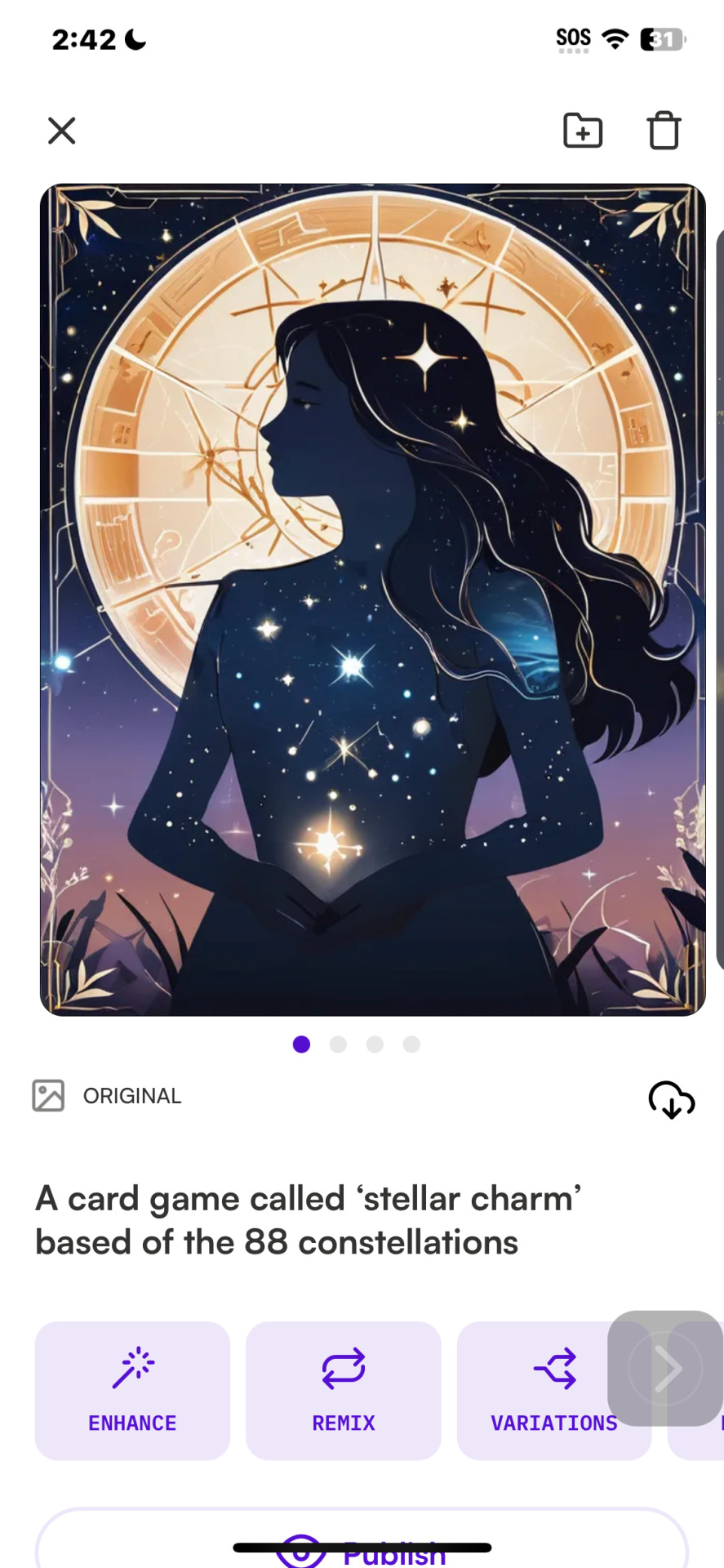


















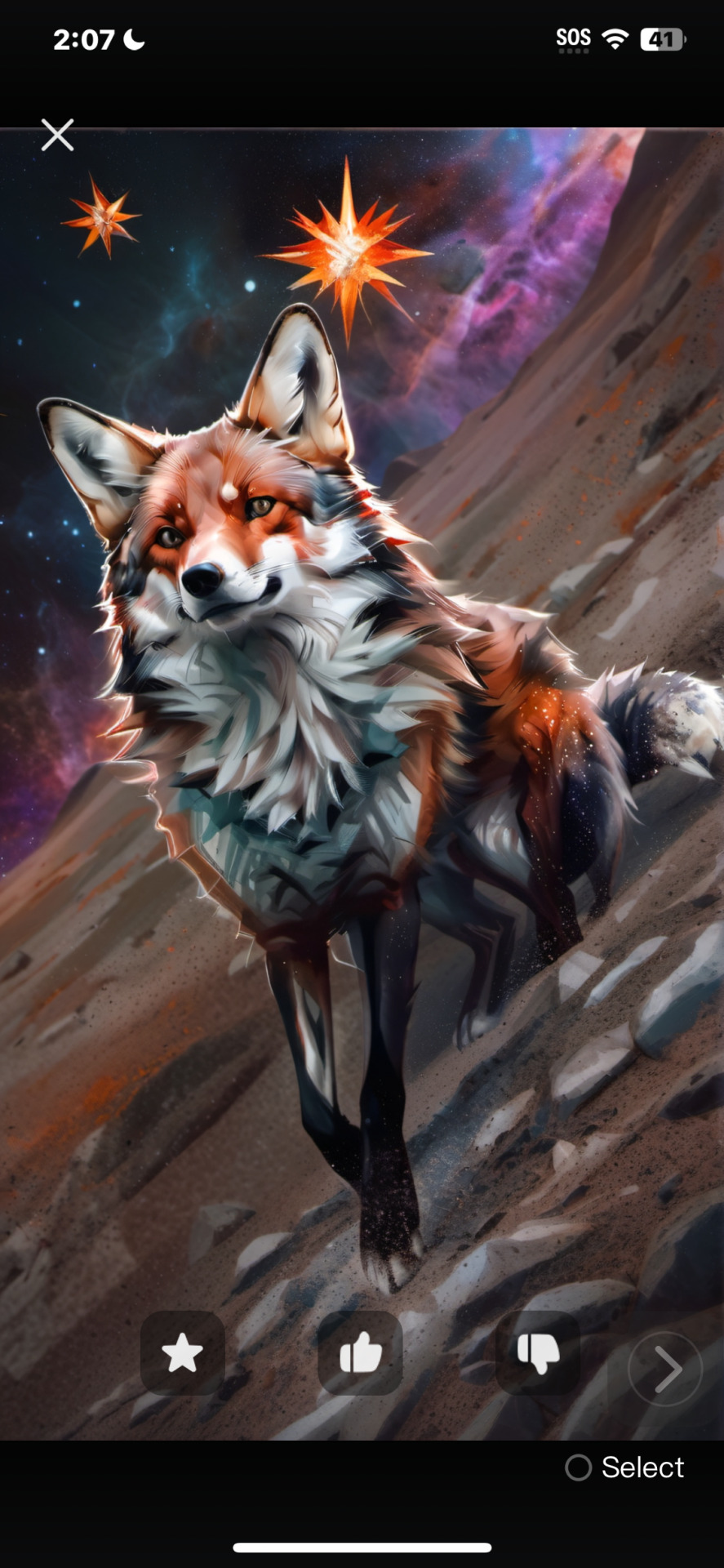








#Business model#play styles#card types#rules#objectives#card elements#stellar charm#battle strategy card game#TCG#Stellar Charm Cards
9 notes
·
View notes
Text
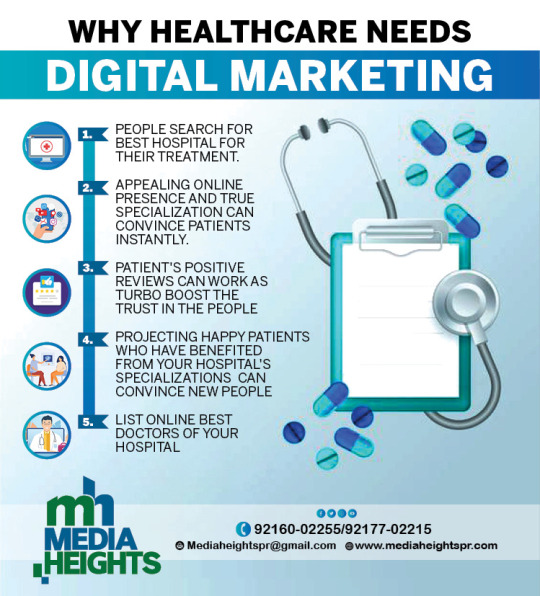
By implementing a well-planned digital marketing strategy, healthcare providers can increase brand awareness, generate leads and conversions, build trust with patients, improve patient engagement and retention rates. Furthermore, data-driven results allow for targeted analysis of campaigns to determine ROI.
#HealthCare #healthcarebranding #healthcareseo build your brand with digital media and benefit from social media branding contact Media Heights. By Mediaheightspr.com
#Inboundmarketing #MEDIAHEIGHTS #digitalmarketingcompany #searchengineoptimization #content #instagrammarketing #worldcancerday #advertisingagency #web #MEDIAHEIGHTSPRCOM #best #public #relation #agency #in #chandigarh #mohali #punjab #north #india #buildingrelationships #globally #customer #internetbanding — at media heights #smo #branding #facebook #twitter #marketingonline #brand #searchengineoptimization #internetmarketing #follow #digitalagency #marketingagency #motivation #digitalmarketingtips #onlinebusiness #websitedesign #marketingonline #brand #searchengineoptimization #content #instagrammarketing #advertisingagency #web #technology #onlinebranding #branding360degree #SEO #SEObrandingagency #websiteranking #websitetrafic #Digitalmarketing #mediaheights #OnlineAdvertising #instagrammarketing #advertisingagency #web #marketingonline #brand
#By implementing a well-planned digital marketing strategy#healthcare providers can increase brand awareness#generate leads and conversions#build trust with patients#improve patient engagement and retention rates. Furthermore#data-driven results allow for targeted analysis of campaigns to determine ROI.#HealthCare#healthcarebranding#healthcareseo build your brand with digital media and benefit from social media branding contact Media Heights. By Mediaheightspr.com#Inboundmarketing#MEDIAHEIGHTS#digitalmarketingcompany#searchengineoptimization#content#instagrammarketing#worldcancerday#advertisingagency#web#MEDIAHEIGHTSPRCOM#best#public#relation#agency#in#chandigarh#mohali#punjab#north#india#buildingrelationships
1 note
·
View note
Text
The Importance of Digital Identity in Today’s Online Business Landscape
In today’s fast-paced digital era, having a strong online presence is not just an option but a necessity especially if you own a business. This online presence, often referred to as your business digital identity. Your business digital presence plays a crucial role in knowing how your business is perceived and how it operates. It surrounded everything from your website and social media profiles to customer reviews and online interactions. In this blog we will explore why digital identity is so important in the contemporary business landscape and how it can make or break your success.
Building Trust and Credibility
The Foundation of Trust
Trust is the foundation of any successful business relationship. In the online world, where face-to-face interactions are almost zero, your digital identity plays a vital role in building that trust. A professional website, active social media profiles, and positive online reviews all contribute to creating a trustworthy image of your business.
Consistency is Key
Consistency across all digital platforms reinforces your brand's credibility. When customers see the same logo, color scheme, and messaging on your website, social media, and marketing materials, it creates a sense of reliability and professionalism. This consistency assures customers that your business is legitimate and dependable.
2. Enhancing Customer Engagement
Connecting with Your Audience
Your digital identity is the bridge that connects you with your audience. Through social media, blogs, and newsletters, you can engage with your customers, answer their queries, and provide valuable content. This ongoing interaction helps build a loyal customer base that feels connected to you and your brand.
Personalization Matters
In the digital age, customers expect personalized experiences. By leveraging data and analytics, you can tailor your digital interactions to meet individual customer preferences. Personalized emails, targeted ads, and customized content make customers feel valued and understood, enhancing their overall experience with your brand.
3. Driving Brand Awareness
Standing Out in a Crowded Market
The online marketplace is highly competitive, with countless businesses fighting for attention. A strong digital identity helps your brand stand out. Unique visuals, compelling content, and a clear brand voice differentiate you from others and make your business valuable.
Expanding Your Reach
Digital identity allows you to reach a global audience. Unlike traditional brick-and-mortar stores limited by geographic location, an online presence can attract customers from around the world. With the right digital strategies, you can expand your reach and tap into new markets, driving growth and revenue.
4. Maintaining Online Reputation
Monitoring and Responding to Feedback
Regularly monitoring online reviews and social media mentions allows you to figure out the public perception of your business. Instantly responding to feedback whether positive or negative shows that you value customers and their opinions and are committed to addressing their concerns. This proactive approach can mitigate the impact of negative reviews and enhance your overall reputation.
Search Engine Optimization (SEO)
Optimizing your website for search engines ensures that your business appears in relevant search results. High search engine rankings increase visibility and drive organic traffic to your site.
5. Influencing Purchasing Decisions
The Power of Online Reviews
Online reviews have a significant impact on purchasing decisions. Potential customers often rely on reviews and testimonials to gauge the quality of a product or service. A strong digital identity with numerous positive reviews can sway undecided customers in your favor.
Providing Comprehensive Information
Your digital identity should offer all the information customers need to make informed decisions. Detailed product descriptions, high-quality images, and transparent pricing build confidence in your offerings. Additionally, informative blogs and FAQs can address common questions and concerns, guiding customers towards making a purchase.
6. Adapting to Changing Trends
Staying Relevant
The digital landscape is constantly evolving, with new technologies and trends emerging regularly. A dynamic digital identity allows your business to stay relevant and adapt to these changes. Whether it’s incorporating new social media platforms, utilizing AI-driven tools, or adopting new marketing strategies, staying updated keeps your brand ahead of the curve.
Engaging with Innovation
Embracing innovation can give your business a competitive edge. Implementing chatbots for customer service, using augmented reality for virtual try-ons, or leveraging big data for targeted marketing are all ways to innovate your digital identity. These advancements not only improve customer experience but also position your brand as forward-thinking and tech-savvy.
In the modern online business landscape, a strong digital identity is essential for success. It builds trust and credibility, enhances customer engagement, drives brand awareness, influences purchasing decisions, and helps your business adapt to changing trends. By investing in your digital identity and continuously refining it, you can create a strong, positive presence that resonates with your audience and sets you apart from the competition.
Remember, your digital identity is often the first impression potential customers have of your brand. Make it count. Embrace the digital world, connect with your audience, and watch your business thrive in the online arena.
9 notes
·
View notes
Text
Digital Marketing Strategy
Set Clear Goals and Objectives: The first step in creating a digital marketing strategy is to define clear goals and objectives. These goals should be specific, measurable, attainable, relevant, and time-bound (SMART). Examples include increasing website traffic, generating leads, improving brand awareness, or driving online sales.
2. Understand Your Target Audience: To effectively reach and engage your target audience, it's important to understand their demographics, interests, behaviors, and pain points. Conduct market research, analyze customer data, and create buyer personas to gain insightful information about your target audience. This will help you tailor your digital marketing efforts to resonate with them.
3. Choose the Right Digital Channels: Identify the digital channels that are most relevant to your target audience and align with your marketing goals. Common digital channels include websites, search engines, social media platforms, email marketing, content marketing, mobile apps, and online advertising. Each channel has unique characteristics and advantages, so choose the ones that best suit your business and audience.
4. Develop Content Strategy: Content is at the heart of digital marketing. Create a content strategy that focuses on delivering value to your target audience. Plan and produce high-quality content that aligns with their interests, needs, and preferences. This can include blog articles, videos, infographics, eBooks, webinars, and social media posts. Consistency and relevance are key to establishing thought leadership and building trust with your audience.
5. Optimize for Search Engines: Implement search engine optimization (SEO) strategies to improve your website's visibility in search engine results. Conduct keyword research to identify relevant search terms and optimize your website's on-page elements, such as meta tags, headings, and content. Create high-quality backlinks from reputable websites to boost your website's authority.
6. Leverage Social Media: Utilize social media platforms to connect with your audience, build brand awareness, and foster engagement. Identify the platforms where your target audience is most active and create compelling content tailored to each platform. Engage in conversations, respond to comments, and encourage user-generated content to cultivate a sense of community and brand loyalty.
7. Implement Email Marketing: Email marketing remains an effective way to nurture leads and engage with existing customers. Develop an email marketing strategy that includes personalized and segmented email campaigns. Provide valuable content, offers, and promotions to your subscribers, and automate email sequences to streamline your communication.
8. Monitor, Measure, and Adjust: Regularly monitor the performance of your digital marketing efforts using analytics tools. Track key performance indicators (KPIs) such as website traffic, conversion rates, engagement metrics, and ROI. Use the insights gained to identify areas for improvement and make data-driven adjustments to optimize your strategy.
9. Stay Updated and Evolve: The digital marketing landscape is constantly evolving. Stay updated with the latest trends, technologies, and industry best practices. Experiment with new channels and tactics to reach your audience. Continuously adapt your strategy based on market changes and feedback from your audience.
10. Evaluate and Refine: Regularly evaluate the effectiveness of your digital marketing strategy against your goals. Identify successes, challenges, and areas of improvement. Refine your strategy based on the insights gained to ensure continuous growth and success.
11. In summary, a well-rounded digital marketing strategy involves setting clear goals, understanding your audience, choosing the right channels, creating valuable content, optimizing for search engines, leveraging social media and email marketing, monitoring and measuring performance, staying updated, and evaluating and refining your approach. By following these steps, businesses can effectively harness the power of digital marketing to achieve their objectives and drive sustainable growth.

19 notes
·
View notes
Text
Search Engine Optimizatio
The Power of Search EngineMarketing : Reach Your Target Audience
Search Engine Marketing (SEM) is a digital marketing strategy that involves promoting a website or online content through paid advertisements on search engines like Google, Bing, and Yahoo. The goal of SEM is to increase visibility, drive traffic, and generate leads or sales by appearing at the top of search engine results pages (SERPs) for specific keywords or phrases.
Benefits of Search Engine Marketing

1. Targeted Advertising: Reach users actively searching for products or services like yours.
2. Increased Brand Awareness: Build recognition and establish your brand as an industry leader.
3. Measurable Results: Track conversions, clicks, and ROI with precision.
4. Flexibility: Adjust bids, ad copy, and targeting options in real-time.
5. Competitive Advantage: Outrank competitors and dominate search engine results.
Types of Search Engine Marketing
1. Pay-Per-Click (PPC): Pay only when users click on your ads.
2. Cost-Per-Thousand Impressions (CPM): Pay for every 1,000 ad views.
3. Display Advertising: Target users with visual ads on search engines and partner websites.
Key Components of a Successful SEM Campaign
1. Keyword Research: Identify relevant and high-traffic keywords.
2. Ad Copywriting: Craft compelling and persuasive ad copy.
3. Landing Page Optimization: Ensure a seamless user experience.
4. Bidding Strategy: Set optimal bids for maximum ROI.
5. Ad Extensions: Enhance ads with additional features like site links and callouts.
Best Practices for Search Engine Marketing
1. Conduct thorough keyword research to identify opportunities.
2. Create high-quality ad copy that resonates with your audience.
3. Optimize landing pages for conversions and user experience.
4. Monitor and adjust bids regularly to ensure ROI.
5. Use ad extensions to enhance ad visibility and click-through rates.
Conclusion
Search Engine Marketing is a powerful tool for businesses to reach their target audience, drive traffic, and generate leads or sales. By understanding the benefits, types, and key components of SEM, you can create effective campaigns that deliver measurable results and a competitive advantage.
3 notes
·
View notes
Text
Mastering Social Media Marketing: The Cardinal Rules for Optimal Result
In the digital age, Social Media Marketing has emerged as a pivotal strategy for businesses aiming to expand their reach, engage with their audience, and boost their brand visibility. For any business, especially those aspiring to be recognized as The Best Digital Marketing Agency In Delhi, mastering the art of social media marketing is essential. Here are the cardinal rules that can help you achieve optimal results in your social media campaigns.
1. Define Your Goals and Objectives
The foundation of a successful social media marketing strategy is a clear understanding of your goals and objectives. Are you looking to increase brand awareness, drive website traffic, generate leads, or boost sales? Defining your goals will help you craft tailored content and measure your success accurately.
2. Know Your Audience
Understanding your target audience is crucial for creating relevant and engaging content. Conduct thorough market research to identify your audience's demographics, interests, and online behavior. Utilize social media analytics tools to gain insights into what content resonates with your audience and adjust your strategy accordingly.
3. Choose the Right Platforms
Not all social media platforms are created equal. Each platform has its unique user base and content style. Identify the platforms where your target audience is most active and focus your efforts there. For instance, LinkedIn is ideal for B2B marketing, while Instagram and TikTok are great for visual and short-form content.
4. Create High-Quality Content
Content is king in social media marketing. Invest in creating high-quality, visually appealing, and engaging content that provides value to your audience. This includes a mix of images, videos, infographics, and written posts. Consistency in posting is key to maintaining audience engagement.
5. Engage with Your Audience
Social media is a two-way street. Engage with your audience by responding to comments, messages, and mentions. Encourage user-generated content and run interactive campaigns such as polls, contests, and Q&A sessions. Building a community around your brand fosters loyalty and trust.
6. Leverage Influencer Marketing
Influencer marketing can significantly amplify your reach and credibility. Collaborate with influencers who align with your brand values and have a strong following in your niche. Influencers can help you tap into new audiences and boost your brand’s visibility.
7. Utilize Paid Advertising
While organic reach is essential, paid advertising can provide a significant boost to your social media efforts. Platforms like Facebook, Instagram, and LinkedIn offer advanced targeting options to reach specific audiences. Invest in social media ads to drive traffic, generate leads, and increase conversions.
8. Monitor and Analyze Performance
Regularly monitor your social media performance using analytics tools. Track key metrics such as engagement rate, reach, impressions, click-through rate, and conversion rate. Analyzing these metrics will help you understand what’s working and what needs improvement. Adjust your strategy based on data-driven insights.
9. Stay Updated with Trends
Social media is constantly evolving with new trends, features, and algorithms. Stay updated with the latest trends and adapt your strategy accordingly. Experiment with new content formats, such as Instagram Reels or Twitter Spaces, to keep your audience engaged and maintain a competitive edge.
10. Collaborate with Experts
If managing social media marketing feels overwhelming, consider collaborating with experts. Partnering with the best digital marketing agency in Delhi can provide you with the expertise, resources, and strategic guidance needed to achieve optimal results in your social media campaigns.
Visit here for More read
https://digitalstrategystar.com/title-mastering-social-media-marketing-the-cardinal-rules-for-optimal-results/
Conclusion
Mastering social media marketing is an ongoing process that requires a strategic approach, continuous learning, and adaptation. By following these cardinal rules, businesses can optimize their social media efforts, engage with their audience effectively, and achieve their marketing goals. Whether you are a small business or the best digital marketing agency in Delhi, these principles will help you harness the power of social media to drive success.
#the best digital marketing agencyin delhi#social media marketing#seo expert#seo#digital marketing#search engine optimization#marketing strategy
4 notes
·
View notes
Text
The Evolution of Digital Marketing Solutions: Strategies for Success
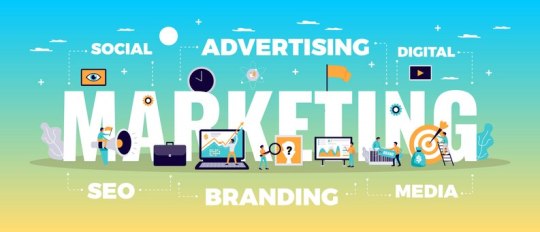
In today's fast-paced digital world, businesses must adopt effective digital marketing solutions to remain competitive and relevant. As consumer behavior shifts increasingly online, traditional marketing methods alone no longer suffice. Digital marketing offers a vast array of tools and strategies that enable businesses to reach their target audience more efficiently and effectively. This article explores the evolution of digital marketing solutions and outlines key strategies for success.
Understanding Digital Marketing Solutions
Digital marketing Solutions encompasses all marketing efforts that use an electronic device or the internet. Businesses leverage digital channels such as search engines, social media, email, and websites to connect with current and prospective customers. Key components of digital marketing include:
Search Engine Optimization (SEO): This involves optimizing a website to rank higher in search engine results pages (SERPs), thereby increasing organic (non-paid) traffic. SEO strategies include keyword research, content creation, and technical website improvements.
Content Marketing: This focuses on creating and distributing valuable, relevant, and consistent content to attract and engage a clearly defined audience. Blogs, videos, infographics, and ebooks are common content marketing tools.
Social Media Marketing: Utilizing platforms like Facebook, Instagram, LinkedIn, and Twitter to promote products and services, engage with customers, and build brand awareness. Social media marketing can be organic or paid (social media ads).
Email Marketing: Sending targeted emails to a group of subscribers to promote products, share news, or nurture relationships. Email marketing remains one of the most cost-effective digital marketing strategies.
Pay-Per-Click (PPC) Advertising: This is a model where advertisers pay a fee each time one of their ads is clicked. Google Ads is a popular PPC platform that helps drive traffic to websites through paid search engine results.
Affiliate Marketing: Partnering with other businesses or influencers who promote your products in exchange for a commission on sales generated through their referral.
Influencer Marketing: Collaborating with influencers who have a large following to promote your brand. This strategy leverages the influencer's credibility and reach to connect with potential customers.
The Evolution of Digital Marketing
Digital marketing has evolved significantly over the past two decades. Early internet marketing efforts were largely experimental, focusing on basic website creation and banner ads. As technology advanced and the internet became more accessible, digital marketing strategies grew more sophisticated.
The rise of search engines in the late 1990s and early 2000s led to the development of SEO, a cornerstone of modern digital marketing. Around the same time, email marketing began to gain traction as businesses realized the potential of direct communication with customers.
Social media platforms emerged in the mid-2000s, revolutionizing how businesses engage with their audience. Initially used primarily for personal connections, social media quickly became a powerful marketing tool. The introduction of social media advertising further expanded the possibilities for targeted marketing.
Content marketing gained prominence in the 2010s as businesses recognized the value of providing informative and engaging content to attract and retain customers. This era also saw the rise of influencer marketing, driven by the growing popularity of social media influencers.
Today, digital marketing Solutions continues to evolve with advancements in artificial intelligence (AI), machine learning, and data analytics. These technologies enable more personalized and data-driven marketing strategies, improving efficiency and effectiveness.
Key Strategies for Success
To succeed in digital marketing, businesses must adopt a strategic approach that combines various digital marketing solutions. Here are key strategies for success:
Define Clear Objectives: Establish specific, measurable, achievable, relevant, and time-bound (SMART) goals. Clear objectives guide your digital marketing efforts and help measure success.
Understand Your Audience: Conduct thorough market research to understand your target audience's needs, preferences, and behaviors. Create detailed buyer personas to guide your marketing strategies.
Create High-Quality Content: Invest in creating valuable and engaging content that addresses your audience's pain points and interests. Quality content builds trust and authority in your industry.
Leverage Data Analytics: Use analytics tools to track and analyze your marketing performance. Data insights help refine strategies, optimize campaigns, and improve ROI.
Embrace Omnichannel Marketing: Ensure a consistent and seamless experience across all digital channels. An omnichannel approach enhances customer engagement and retention.
Stay Updated with Trends: Digital marketing is dynamic and constantly evolving. Stay informed about the latest trends, technologies, and best practices to stay ahead of the competition.
Test and Optimize: Continuously test different strategies and tactics to identify what works best. Optimization is an ongoing process that enhances the effectiveness of your digital marketing efforts.
Conclusion
Digital marketing solutions have transformed how businesses connect with their audience, offering unparalleled opportunities for growth and success. By understanding the evolution of digital marketing and adopting key strategies, businesses can harness the power of digital channels to achieve their marketing goals. In an ever-changing digital landscape, staying adaptable, informed, and customer-focused is the key to thriving in the digital age.
4 notes
·
View notes